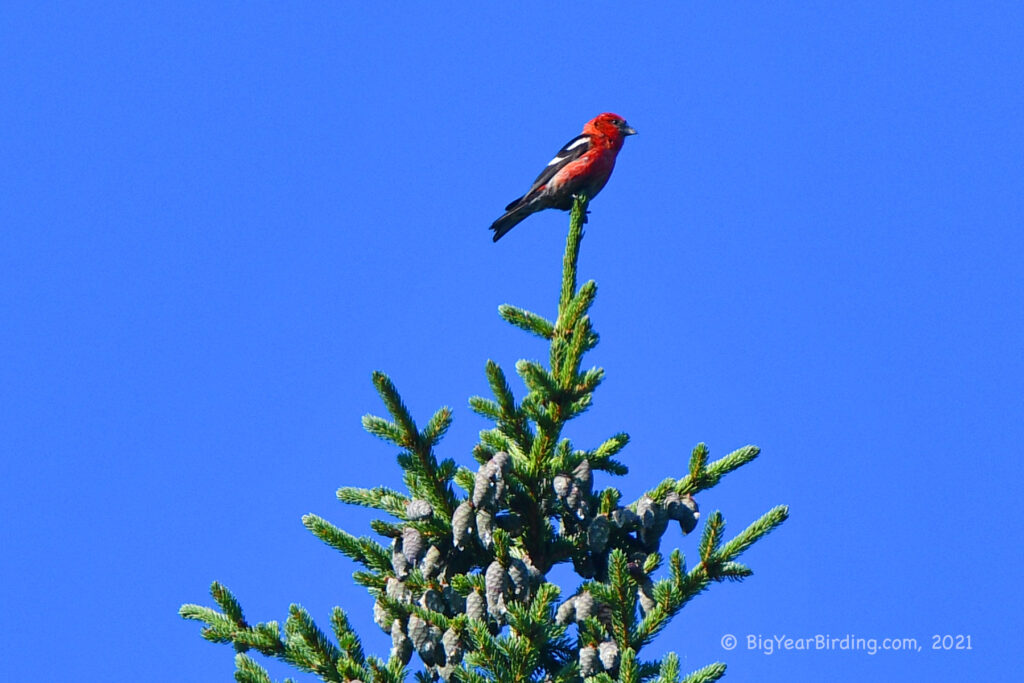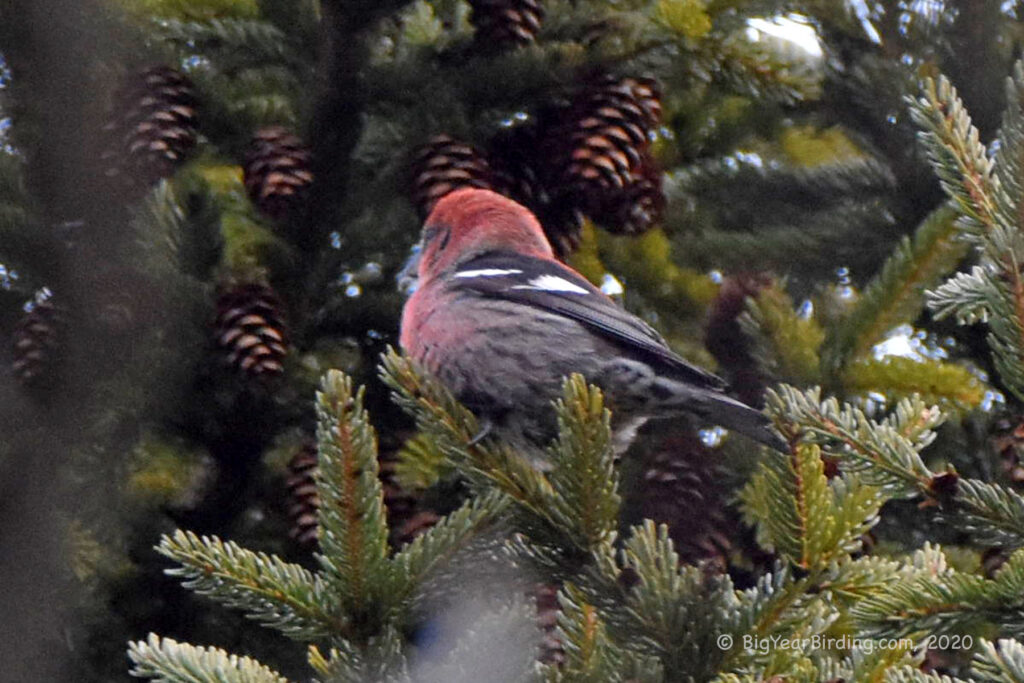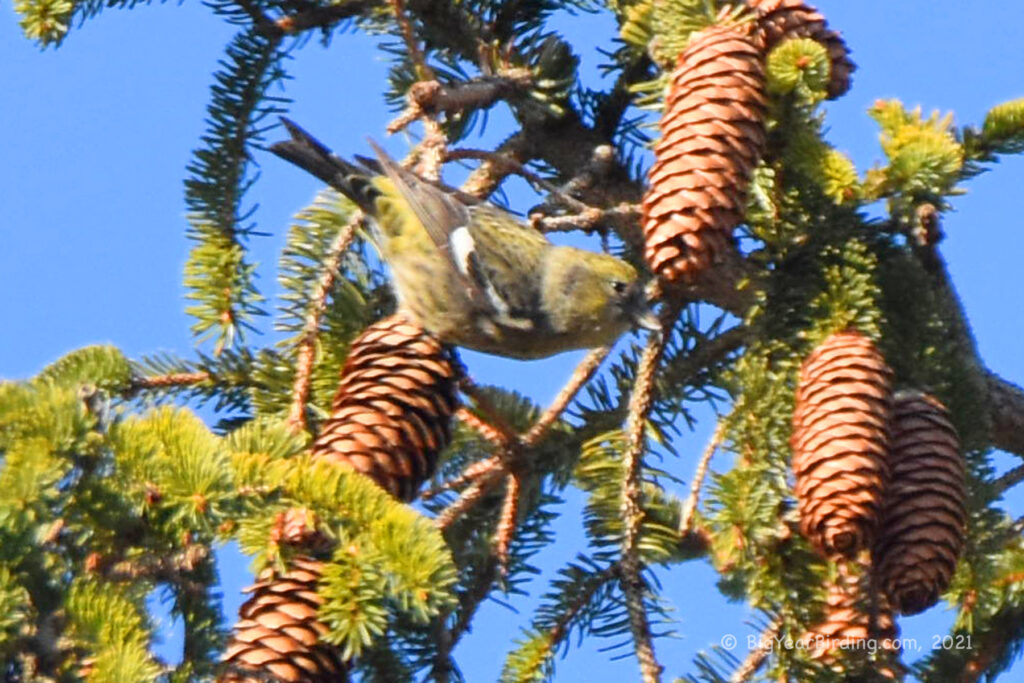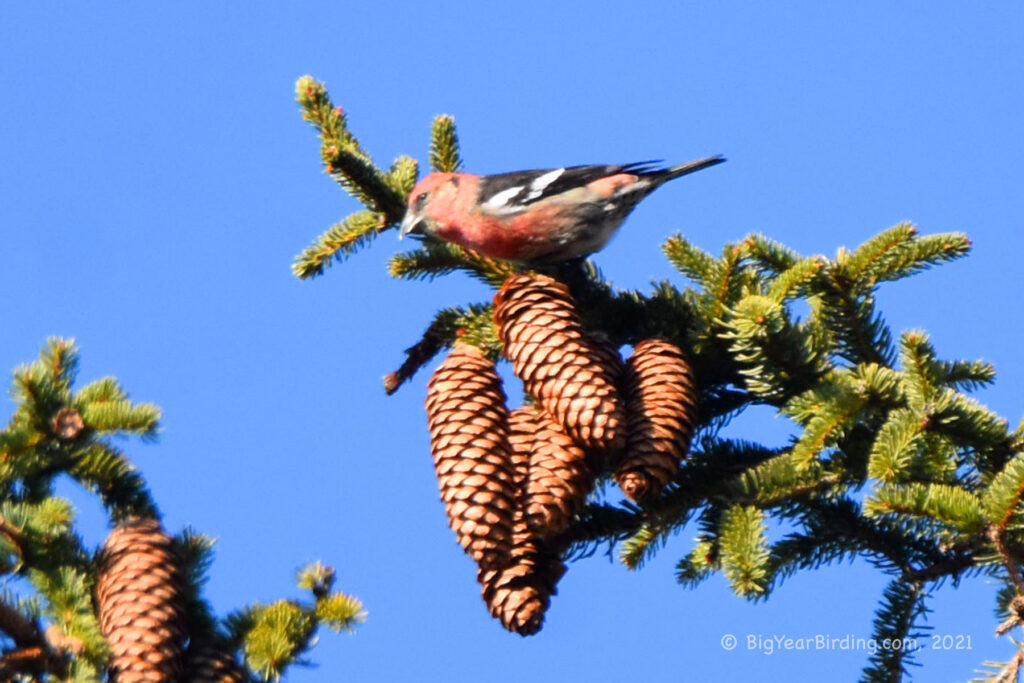
The White-winged Crossbill is a small, colorful bird that belongs to the finch family. It measures around 6 inches in length and weighs approximately 1 ounce. This species is easily identifiable by its unique crossed bill, which it uses to pry open the scales of conifer cones to access the seeds within. The males are predominantly red in color, while the females are generally a more muted yellow-green.

This species has a circumpolar distribution and can be found in North America, Europe, and Asia. It is a non-migratory species that can be seen throughout the year in its breeding range. However, it is known to irrupt, or move southward in search of food, during periods of low seed production in its boreal forest habitat. During these irruptions, White-winged Crossbills may appear in unexpected locations and in large numbers.
During the breeding season, White-winged Crossbills can be found in coniferous forests across their range, where they construct nests in the branches of trees. The females lay 3-4 eggs and are responsible for incubating them for approximately two weeks. The young leave the nest about three weeks after hatching and are able to feed themselves within a few days of leaving the nest.
In addition to its unique bill, the White-winged Crossbill can also be distinguished by its flight call, which is a distinctive “jip-jip” or “kip-kip” sound. They are also known for their acrobatic flight style, which allows them to maneuver easily among the branches of trees.

The White-winged Crossbill is an important species in the boreal forest ecosystem, as it plays a critical role in seed dispersal for coniferous trees. It is also a popular species among birdwatchers, who are drawn to its unique appearance and behavior.

